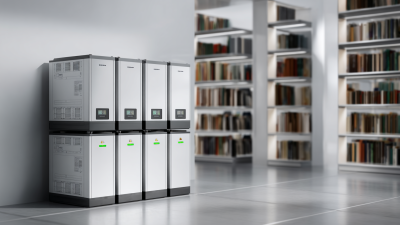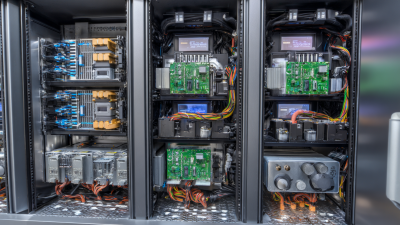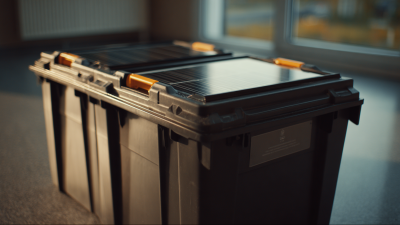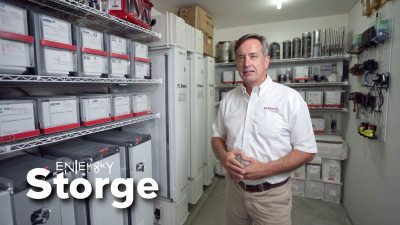As the global energy landscape shifts towards renewable sources, the importance of Home Battery Storage has become increasingly prominent. According to a report by Bloomberg New Energy Finance, the home battery market is expected to grow at a compound annual growth rate of over 23% through 2027, driven by advancements in battery technology and a growing demand for energy independence. With homeowners seeking to optimize energy usage and reduce reliance on traditional power grids, Home Battery Storage solutions are emerging as pivotal components of modern energy systems. This innovation not only supports sustainable energy practices but also empowers users to store excess energy generated from on-site renewable sources such as solar panels, ensuring reliable power availability during peak demand or outages. As we delve into the future of Home Battery Storage, it becomes clear that maximizing energy independence will play a crucial role in reshaping how we consume and manage energy in our homes.
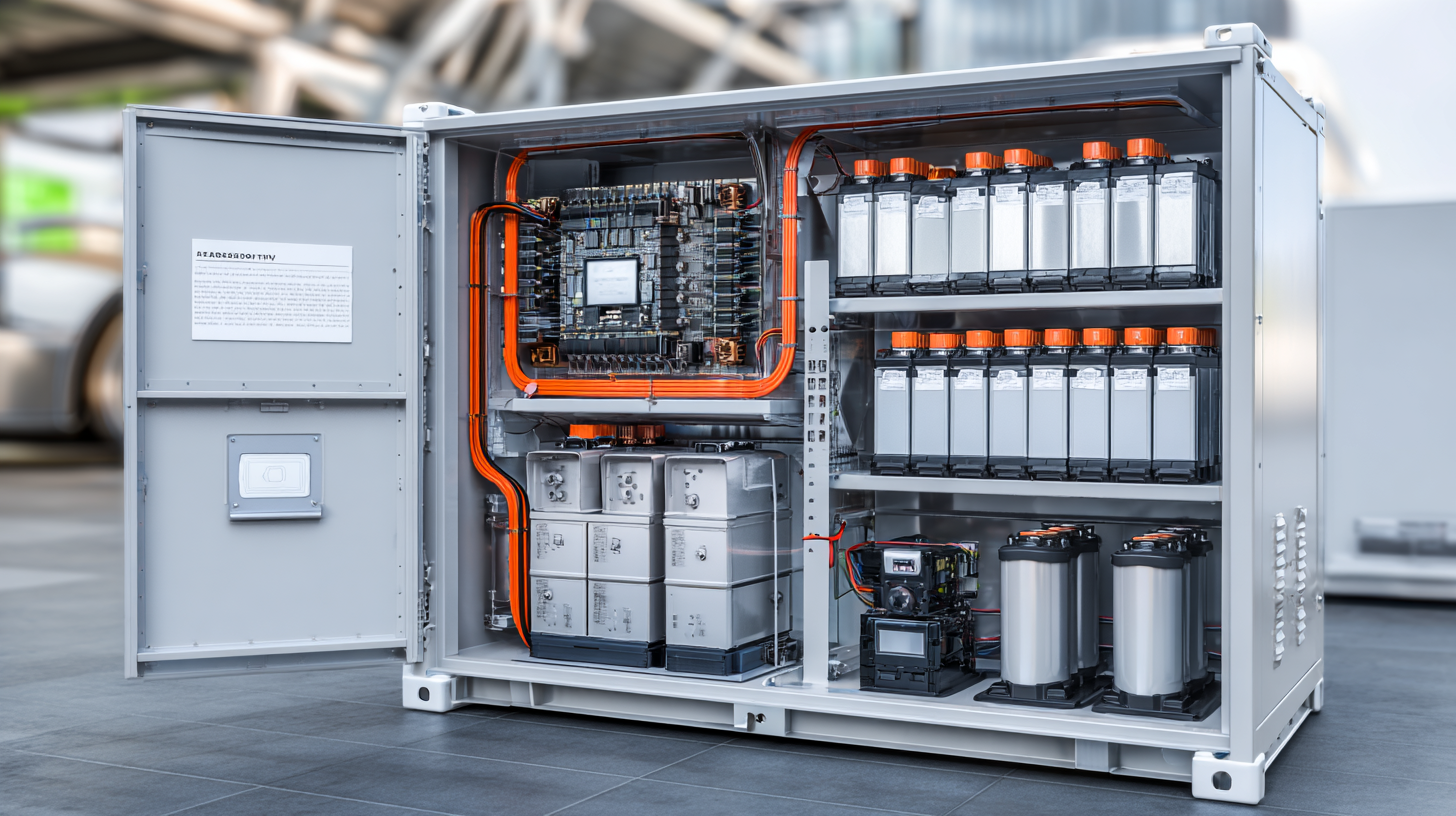
As homeowners increasingly seek energy independence, home battery storage solutions have emerged as a pivotal technology. According to the U.S. Department of Energy, the global home battery market is projected to grow from approximately 2.9 gigawatt-hours (GWh) in 2020 to over 14 GWh by 2025, indicating a significant shift toward sustainable energy practices. This growth is driven by decreasing costs of lithium-ion batteries, which have plummeted by about 89% since 2010, making home energy storage more accessible than ever.

The advantages of home battery storage are manifold. They provide a reliable backup power source during outages and can be charged using renewable energy sources like solar panels, helping homeowners reduce their reliance on the grid. A report from the International Renewable Energy Agency highlights that homes equipped with battery storage can achieve up to 90% energy self-consumption, leading to substantial savings on electricity bills. Additionally, battery storage systems enable consumers to engage in demand response programs, allowing them to sell excess energy back to the grid, which not only maximizes energy independence but also contributes positively to the environment.
The future of home battery storage solutions is being shaped by several key technologies that enhance energy independence for homeowners. As the demand for sustainable energy solutions rises, innovations in battery chemistry, management systems, and integration with renewable sources like solar power are at the forefront of this evolution. The global transparent solar cell market, expected to reach $89.88 million by 2032, showcases the potential of combining photovoltaic technology with energy storage. This synergy not only boosts energy generation but also provides homeowners with a reliable and efficient means to harness and store energy.
Moreover, advancements in artificial intelligence are enabling smarter energy management systems that optimize battery performance and efficiency. These AI-driven technologies analyze usage patterns, predict energy demand, and coordinate with smart home devices, ensuring that energy is utilized effectively. As industries collaborate to drive research and development, the emergence of innovative battery designs is paving the way for more compact, higher-capacity storage solutions that seamlessly integrate into everyday life, ultimately supporting a transition towards a more energy-independent future.
As homeowners look to minimize reliance on traditional power sources, the cost-benefit analysis of home battery systems becomes crucial. According to a report from the U.S. Department of Energy, the average price of home battery installations has decreased by approximately 70% since 2010, making them more accessible for the average consumer. A typical lithium-ion battery system can store about 10 kWh of electricity, allowing homeowners to utilize solar energy effectively while also providing backup during outages. The potential savings on energy bills, combined with federal tax credits, can offset the upfront costs significantly.
When evaluating whether to invest in a home battery system, consider these tips: First, assess your energy consumption to determine the capacity you need. Second, explore financing options and incentives available in your area, as these can greatly influence the overall cost. Lastly, factor in your local energy rates and sunlight availability, which can enhance the efficiency and effectiveness of your battery system.
Home battery storage not only aids in energy independence but can also increase property value. A National Renewable Energy Laboratory study indicated that homes equipped with solar-plus-storage systems could see property value increases of about 15%. Thus, understanding the economics of battery systems is essential for making an informed decision about your energy future.
| Home Battery Model | Capacity (kWh) | Installation Cost ($) | Average Lifespan (Years) | Annual Savings ($) | Payback Period (Years) |
|---|---|---|---|---|---|
| Model A | 10 | 8,000 | 15 | 1,200 | 6.67 |
| Model B | 13 | 10,500 | 10 | 1,500 | 7 |
| Model C | 8 | 6,500 | 12 | 1,000 | 6.5 |
| Model D | 15 | 12,000 | 20 | 1,800 | 6.67 |
As the world shifts towards sustainable energy practices, integrating renewable energy sources with home battery storage solutions emerges as a vital strategy for energy independence. Homeowners can harness solar, wind, or other renewable resources, generating their own electricity to power their homes while reducing reliance on the grid. By pairing these energy sources with efficient battery systems, households can store excess energy generated during peak production times for use during periods of low generation or high demand.
The synergy of renewable energy and home battery systems not only enhances energy independence but also promotes resilience in the face of energy disruptions. With the ability to store energy, homeowners can navigate fluctuations in utility prices and ensure a consistent energy supply even during outages. Furthermore, advancements in battery technology and decreasing costs make these systems increasingly accessible, encouraging more households to adopt sustainable energy solutions. As more residents invest in integrating renewable sources with battery storage, the collective impact can lead to a more sustainable and self-sufficient energy model for communities.

The shift towards energy independence at home is increasingly supported by a range of regulatory incentives and programs designed to encourage the adoption of home battery storage solutions.
According to a recent report from the U.S. Department of Energy, residential energy storage installations have grown exponentially, with a 50% increase in capacity just in the last year. This surge is largely attributed to government incentives like the Federal Investment Tax Credit, which allows homeowners to deduct 26% of the solar installation costs from their federal taxes, effectively lowering the barrier to entry for energy storage systems.
Moreover, various states are implementing their own programs to promote energy independence through home battery systems. For instance, California's Self-Generation Incentive Program (SGIP) offers significant rebates for residential energy storage, which can cover up to 50% of installation costs. Reports from the National Renewable Energy Laboratory indicate that these combined efforts can provide homeowners with not only robust energy independence but also potential savings on electricity bills that can reach up to $1,000 annually. As regulatory frameworks continue to evolve, home battery storage is poised to play a pivotal role in the future of sustainable energy solutions.
